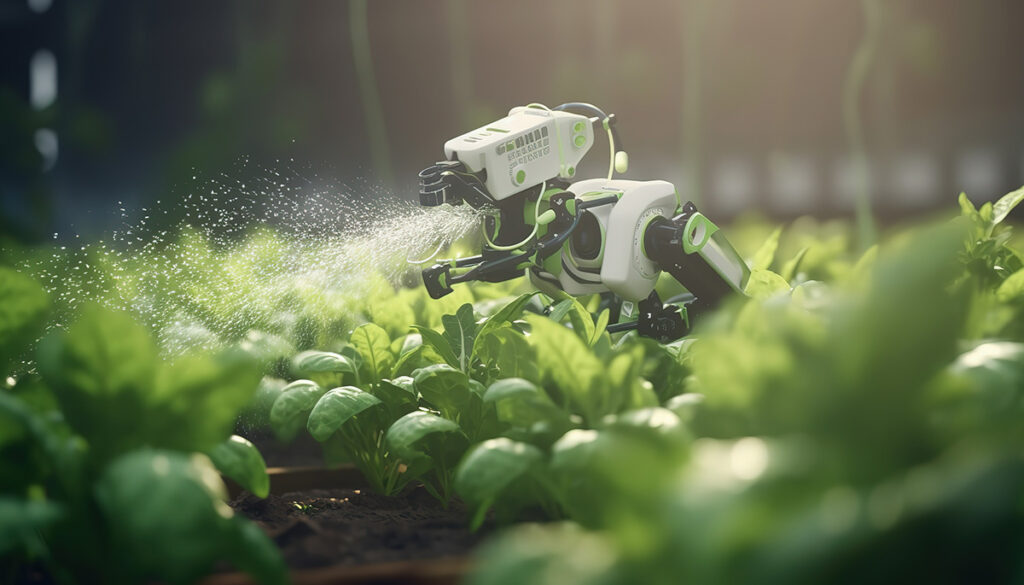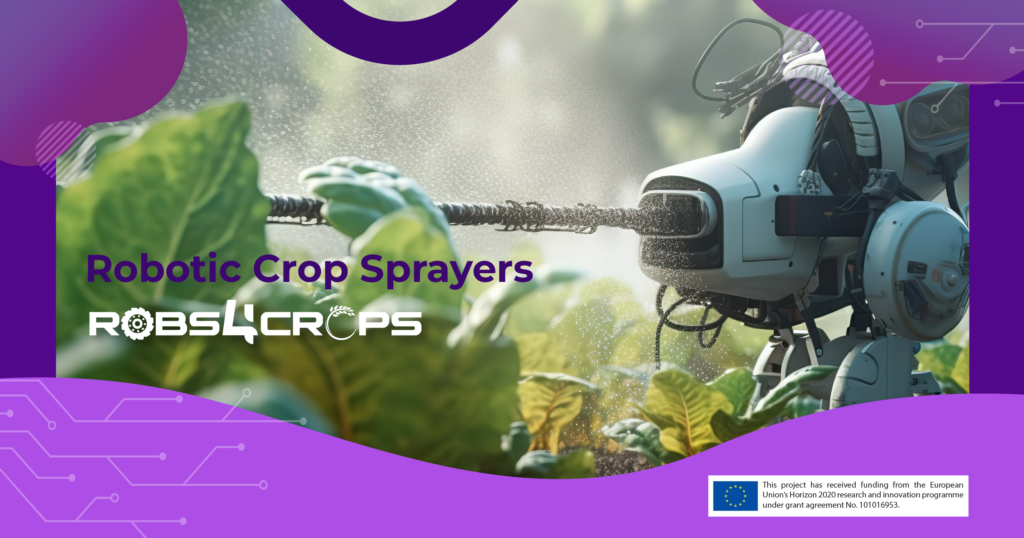The Need for Innovation in Agriculture
As the global population continues to grow, the demand for food production is reaching unprecedented levels. Traditional farming practices, while effective, often face challenges related to source optimization, labour shortages, cost effects, and environmental impact. In this context, the integration of robotics into agriculture emerges as a promising solution to address these challenges.
Initiating the pursuit of the United Nation’s Sustainable Development Goals (SDGs), precision agriculture possesses the potential to enhance per-acre production, automate farming operations, and promote environmental sustainability. Agricultural robotics and automation, integral to the Industrial Revolution, are widely recognized as instrumental in realizing UN SDGs, including the ensurance of life on land.
Robotic Crop Sprayers: An Insight
Why use herbicides on entire crops, considering their expense and potential environmental harm, instead of applying them only to the specific areas where weeds are present?
Robotic crop sprayers, equipped with advanced technologies such as artificial intelligence, GPS, and sensors, have emerged as game-changers in modern agriculture. These sprayers are designed to autonomously navigate through fields, accurately applying fertilizers, pesticides, and herbicides. There are various reasons why these machines are so effective. The key components are:
- Precision Technology: Armed with precise GPS systems, these machines navigate fields with unmatched accuracy. This precision ensures that agrochemicals are applied only where needed, minimizing waste.
- AI algorithms: AI algorithms analyze information about crop health, soil conditions, and weather patterns in real-time.
- Autonomous Operations: Farmers can program these machines to follow predefined paths, covering the entire field without the need for constant human intervention.

Advantages of Robotic Crop Sprayers
The Adoption of robotic crop sprayers brings a multitude of benefits to modern agriculture:
- Precision Agriculture: Precision is the hallmark of robotic crop sprayers. By precisely targeting areas that require treatment, these machines optimize the use of agrochemicals, reducing overall consumption and minimizing the environmental impact.
- Increased Efficiency: Robotic sprayers can cover large areas in a shorter time frame compared to traditional methods, allowing farmers to manage larger fields with ease.
- Resource Optimization: The precise application of fertilizers, pesticides, and herbicides leads to better resource utilization and better soil health.Farmers can save on input costs while maximizing the effectiveness of crop protection measures.
- Labour Savings: In recent years, agriculture has been facing challenges related to labour shortages. Robotic crop sprayers help address this issue by automating the spraying process, reducing the dependency on manual labour.
- Environmental Sustainability: By minimizing chemical runoff and reducing the overall use of agrochemicals, robotic crop sprayers contribute to environmental sustainability. This approach aligns with a growing emphasis on sustainable and eco-friendly farming practices.
Robs4Crops project as a success story
The Spanish pilot – Enhancing apple orchard spraying
In the case of the Spanish pilot, it is specifically improving the process of spraying apple orchards. Catalonia is renowned for producing some of the world’s finest apples. Despite the delicate cultivation process, the region faces challenges posed by fungal diseases, making orchard management a demanding task. Fortunately, Robs4Crops is actively working to enhance the spraying techniques in apple orchards, aiming to alleviate the challenges associated with fungal diseases. The goal is to automate the process, reduce chemical dependency, and alleviate the labour shortage. The Spanish pilot is mastering the craft of apple orchard spraying by using a different technology, including a retrofitted tractor, an autonomous sprayer, a new perception unit, a terminal, an AGC Box. This involves retrofitting a tractor with the AGC kit and the EOLO model of the sprayer from Teyme.
They successfully sprayed 2 plots: one with 12 hectares of old trees (Gala variety) and another with 10 hectares of young trees (Granny variety).
The Spanish pilot is currently conducting on-site trials to evaluate the operational efficiency of the tractor at different RPMs and speeds.
The Greek pilot- Table Grape Spraying for a healthier tomorrow
The Greek pilot specializes in spraying table grape vineyards that require extensive care due to the high-quality expectations of supermarkets and consumers. The grapes are vulnerable to pests and illnesses, making up to thirty preventive treatments and foliar fertilizers necessary throughout the growing season. However, the limited time frame for each application makes it challenging to find adequate labour, and the associated costs are considerable. This is where the Greek pilot comes in, implementing state-of-the-art technology to enhance the process of table grape spraying: a retrofitted tractor, a CEOL robot, a Perception Unit, a Hydraulic System, a Terminal, and an AGC Box. The Perception Unit played a crucial role in autonomous spraying, especially when the vine leaves reached the required density. In 2023, the team conducted spraying trials comparing autonomous and conventional methods in a 0.46-hectare commercial field. Challenges emerged in perfecting the Perception Unit, handling delayed robot arrivals, technical issues during spraying, speed control, and requiring human supervision. Yet, the team’s resilience led to significant strides in autonomous control and data communication.
Challenges of Adoptiont
While the benefits of robotic crop sprayers are significant, some challenges need to be addressed:
Initial Investment: The upfront cost of acquiring robotic crop sprayers can be a significant barrier for some farmers. However, it is important to consider the long-term savings and benefits associated with increased efficiency and resource optimization.
Technological Integration: Farmers may face challenges integrating and adapting to new technologies. Proper training is essential to ensure a smooth transition to robotic crop spraying.
Regulatory Compliance: The deployment of robotic crop sprayers may be subject to regulatory frameworks. Ensuring compliance with local and international regulations is crucial for the widespread adoption of this technology.
Conclusion
Robotic crop sprayers represent a significant leap forward in modern agriculture. These precision, efficiency, and sustainability benefits make them valuable assets for farmers looking to meet the challenges of feeding a growing global population. While there are initial hurdles to overcome, the long-term advantages of adopting robotic crop sprayers far outweigh the challenges. As technology continues to advance, we can expect these autonomous machines to play an increasingly pivotal role in shaping the future of agriculture.
Stay informed about the most recent advancements by staying tuned to the latest updates on the ROBS4CROPS Newsroom!

